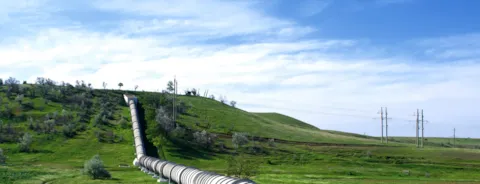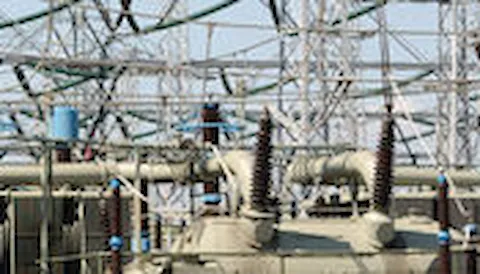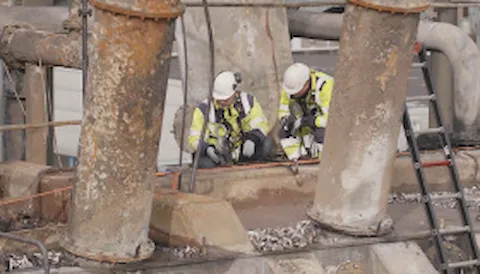High voltage interference assessments for a safe working environment
Meeting the goals set out in the UN “2030 Agenda” requires an accelerated implementation of renewables-based power generation. Consequently, power grids will have to meet an increased demand, leading to a rise of interference situations as well as the criticality of existing interference situations. DNV’s high voltage interference assessments enable grid operators to determine the criticality of interference situations and ensure compliance with standard-based limit values.
High voltage interference assessments for a safe working environment
Situation
Ensuring safety of expanding grinds
- Expanding grids: Changing from fuel-based power generation to renewables-based power generation causes a change from a centralized power generation to a decentralized power generation. This in turn leads to a higher demand on the power grids, which results in increased maximum operating currents and additional line runs
- Increased interference: Higher currents or changing grids lead to a higher degree of interference between the power grids and their neighbouring infrastructures. This in turn poses a danger for personnel or the public, who potentially come in contact with the neighbouring metallic infrastructures.
Complication
Due to a potentially life-threating situation and based on § 49a EnWG it has to be ensured that the interference situation is not critical, either by verifying that the potentially tapped touch voltage values are below the limit values defined in DVGW GW 22 for pipelines and in the DIN VDE 0845-6 series for telecommunication cables or, if those limit values are exceeded, by taking appropriate measures to ensure sufficient protection of the personnel and public. Both the power grid operator as well as the operators of neighbouring metallic infrastructures need to ensure compliance with the set out limit values, if they cause a change of the interference situation.
Solution
High voltage interference assessments - DNV offers a holistic suite of solutions tailored to ensure compliance:
- Calculation of the criticality of the interference situation: As a first step, the criticality of an interference situation can be calculated based on the criteria defined in the mentioned standards and then evaluated by the SME of the respective grid operator
- HVIC online: A web application which calculates a preliminary assessment of the criticality of interference situations based on the line run data and a few additional parameters, thus enabling the grid operator to assess the criticality of the interference situation (the application is currently covering the German market only)
- Dedicated pre-screening projects: In case of multiple to be assessed interference situations, DNV can perform the pre-screening and associated tasks for the grid operator
- Calculation of the touch voltage values: If the interference situation is potentially relevant or relevant, the party which caused the change of the interference situation needs to order a calculation of the touch voltage values on the affected grid(s). Here, inductive interference, as well as in some cases ohmic- and capacitive interferences need to be considered
- Calculation of appropriate earth connection types and placement locations: If the touch voltage limit values are exceeded, appropriate earth connections should be placed. We offer the calculation of appropriate earth connection types and placement locations with respect to reducing the touch voltage values. Since different requirements need to be met with respect to the placement of the earth connections, this process usually requires at least one iteration
- HVI workshops: We offer modular workshops on high voltage interference (HVI) which cover geo data basics and processing, basics of HVI, HVI standards, and HVI related laws and regulations
- Supporting tasks:
- Investigation of potentially affected grids
- Investigation of interference causing power grids incl. preload investigation
- Inquiring geo data and technical parameters of involved grid operators
Why DNV
Choosing DNV for Strategic Grid Planning ensures access to unparalleled expertise and innovative solutions:
- Expertise in hybrid grids: Our leadership in the development and implementation of hybrid AC/DC grid solutions positions DNV as a pioneer in facilitating the transition to a sustainable energy system
- Global insights, local applications: Leveraging global expertise and insights, DNV tailors its grid planning strategies to meet the unique challenges and opportunities of regional grids, ensuring compliance with local regulations and societal expectations
- Commitment to innovation and sustainability: DNV's commitment to leveraging cutting-edge technologies and sustainable practices ensures that our grid planning solutions not only meet today’s challenges but are also resilient and adaptable to future energy landscapes.
With DNV’s Strategic Grid Planning service, operators are equipped to confidently face the challenges of renewable integration and grid modernization. Our comprehensive approach ensures that your grid not only meets the demands of today but is also poised to embrace the opportunities of a renewable-dominated future. Join us in shaping the grid of tomorrow, where reliability, sustainability, and innovation drive progress.




